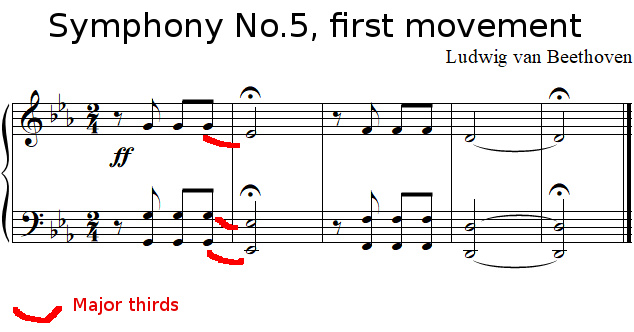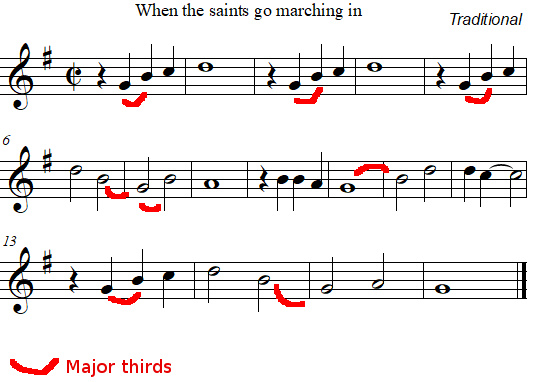In music theory, a major third is an interval that has four half steps 

The major third requires that:
- The interval must be a third interval (three note names between the first and the last).
- The interval must have four half steps.
What does a major third look like?
Here is an example of a melodic major third (two music notes in a melody) and a harmonic major third (in a chord):

How to recognize a major third?
Rule of music theory: All intervals in a major scale starting with the tonic (degree I) are either major or perfect, and only unison, octave, fourth and fifth are perfect (the others are major).
Example with the interval A♭ / C:
Let's take the A flat major scale to have A♭ as the tonic:

From the rule stated above, it becomes clear that A♭ / C is a major third.
Inversion of the major third
The inversion of the major third is the minor sixth.
Here is an example of a minor sixth:

Musical examples of major third
Beethoven's Symphony No.5, first movement
The first descending interval of the beginning of Beethoven's Fifth Symphony is a major third:

When the saints go marching in
The famous song When the saints go marching begins with a major third:

Interval identification game
You will find this interval in my Intervals identification game:


